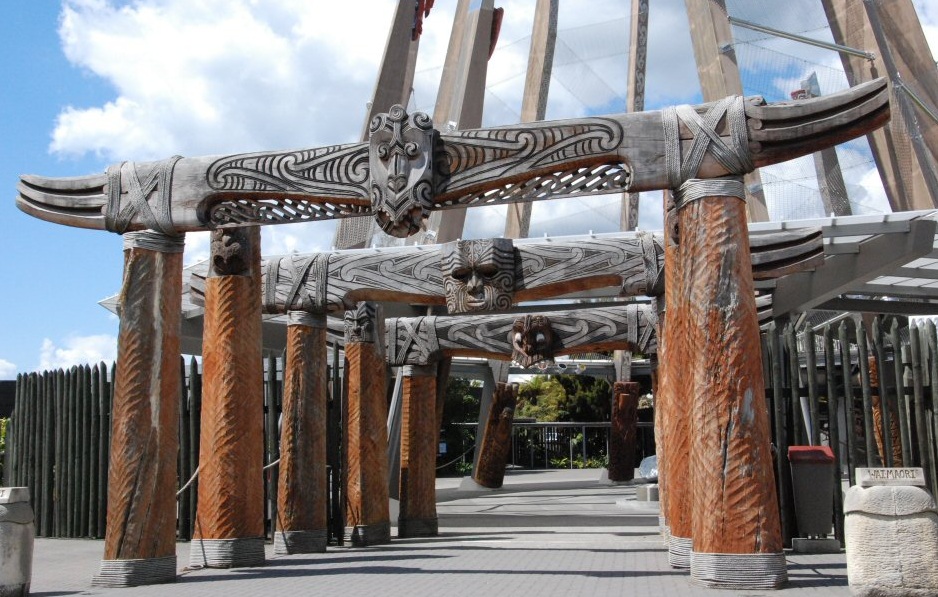- Study in AustraliaAustralian Universities/CollegesPrograms by faculty AusAustralian VisasLife in Australia
- Study In New ZealandNew Zealand UniversitiesPrograms by Faculty NZNew Zealand VisasLife in New Zealand
- Study in CanadaUniversities/Colleges in CANADAPrograms by faculty CanadaCanadian VisasLife in Canada
Culture
New Zealand Culture
New Zealand culture is a unique and dynamic. The culture of its indigenous Maori people affects all New Zealanders. The Māori people are the indigenous people of Aotearoa (New Zealand) and first arrived here in waka hourua (voyaging canoes) from their ancestral homeland of Hawaiki over 1000 years ago. Today, Māori make up over 14 percent of the population. Their language and culture has a major impact on all facets of New Zealand life.
Rich and Varied
Māori culture is a rich and varied one, and includes traditional and contemporary arts. Traditional arts such as carving, weaving, kapa haka (group performance), whaikorero (oratory) and moko (tattoo) are practised throughout the country. Practitioners following in the footsteps of their tipuna (ancestors) replicate the techniques used hundreds of years ago, yet also develop exciting new techniques and forms. Today Māori culture also includes art, film, television, poetry, theatre, and hip-hop.
Stories and Legends
Māori is an oral culture rich with stories and legends. The Māori creation story describes the world being formed by the violent separation of Ranginui, the Sky Father, and Papatuanuku, the Earth Mother, by their children. Many Māori carvings and artworks graphically depict this struggle.
Fishing up an Island
The creation of New Zealand is described by the legend of Maui. This god managed, among other things, to harness the sun in order to make the days longer. However, his biggest claim to fame was his fishing up of the North Island, which is described as Te Ika a Maui (the fish of Maui). A look at an aerial map of the North Island will show how closely it resembles a fish. Māori believe the far north to be the tail of the fish and Wellington Harbour the mouth. Māori describe the South Island as Maui’s waka (canoe) and Stewart Island (Rakiura) as his punga (anchor).

Te Reo Māori — the Māori Language
The visitor to New Zealand will become immediately aware of the Māori language as the vast majority of place names are of Māori origin. At first, visitors may be puzzled by the seemingly impossible- to-pronounce names. In fact, Māori has a logical structure, and, unlike English, has very consistent rules of pronunciation.
How do you say Onehunga, Whangamomona, Kahikatea, and Nguru?
Māori consists of five vowel sounds: a e i o u (‘a’ as in ‘car’, ‘e’ as in ‘egg’, ‘i’ like the ‘ee’ in ‘tee’, ‘o’ as in ‘four’, ‘u’ like an ‘o’ in ‘to’). There are eight consonants in Māori similar to those in English — ‘h’, ‘k’, ‘m’, ‘n’, ‘p’, ‘r’, ‘t’, and ‘w’. There are also two different consonants — ‘wh’ and ‘ng’. Many Māori pronounce the ‘wh’ sound similar to our ‘f’. The ‘ng’ is similar to our own ‘ng’ sound in a word like ‘sing’, except that in Māori, words can start with ‘ng’.
Kia ora = Gidday!
An attempt by a visitor to use Māori greetings will almost certainly elicit a delighted response from both Māori and Pakeha (European) New Zealanders.
- Kia ora — Hello
- Kia ora tatou — Hello everyone
- Tena koe — Greetings to you (said to one person)
- Tena koutou — Greeting to you all
- Haere mai — Welcome
- Nau mai — Welcome
- Kei te pehea koe? — How’s it going?
- Kei te pai — Good
- Tino pai — Really good
- Haere ra — Farewell
- Ka kite ano — Until I see you again (Bye)
- Hei konei ra — See you later
.jpg)
Māori Protocol
Being a tribal Polynesian people, Māori have a unique protocol. The best place to observe it is on a marae (Māori meeting grounds). Many tourist operators in New Zealand organise visits to marae.
Welcome to the Powhiri
A powhiri (formal welcome) at a marae begins with wero (challenge) A warrior from the tangata whenua (hosts) will challenge the manuhiri (guests). He may carry a spear (taiaha) then lay down a token (often a small branch) that the manuhiri will pick up to show they come in peace. Some kuia (women) from the tangata whenua (hosts) will perform a karanga (call/chant) to the manuhiri. Women from the manuhiri will then respond as they move onto the marae in front of their men.
Whaikorero — Speeches of Welcome
Once inside the wharenui (meeting house) on the marae, mihimihi (greetings) and whaikorero (speeches) are made. To reinforce the good wishes of the speeches, waiata (songs) may be sung. It is usual for the manuhiri then present a koha (gift) to the tangata whenua after greeting the hosts with a hongi — the ceremonial touching of noses. After the powhiri, kai food) may be shared.
For more information, please contact one of our offices
Study in Australia | Study in the UK | Study in Malaysia | Study in Canada | Study in the USA | Study in New Zealand













